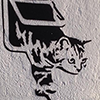Search the Community
Showing results for 'non destructive RAW'.
-
Correct, but on Serif's official tutorial it looks different, though I understand it's just a UI thing as the option at that point is disabled, but that throw me off for a moment. That said, I thought the non-destructive raw development would apply to anything, like with Adobe camera raw, which is very handy. Instead, in Affinity Photo, it only applies to an actual raw file the first time it's opened. Quite a missed opportunity there, hopefully it will be extended in the future.
-
Yup, I was wishing, hoping, praying for TWO things from the new update. One: non-destructive raw editing (yay), and two: some sort of ability to easily apply edits from one raw file to others. For me, it's for creating panoramas out of raw files, as well as different shots of the same subject taken with the same settings. I was really hoping Affinity could become my main editor, but guess I'll have to move on now.
-
New Software: Affinity Develop
moonheads replied to eRaCer001's topic in Feedback for the Affinity V2 Suite of Products
I wonder if the functionality that Lightroom offers can be better done as a simple add-on for Photo2 (or 3). ...like, basically an integrated browser window that offers more functionality (like the non-destructive edits from the Raw processor) than the typical "file open" finder window of most Mac Apps. So the "Darkroom" (or Lightbox, or whatever they call it), could make use of all the Raw processing features, as well as the more advanced Photo features. That would absolutely spank Adobe silly. -
HSL in Develop Personna
AlejandroJ replied to malogrand's topic in Feedback for Affinity Photo V1 on Desktop
For what I know (or I think I knew), corrections can’t be applied to the original raw data (raw data can’t be altered nor edited), but corrections of values (reassignment of values?) done during the development of the raw file will be applied to the image / file that will result from the development process (or something like that). The programs that I know that are specific or specialized in developing raw files, either add information to the raw file to let the program know what “corrections” (ok, they are not corrections because a raw file is not an image, but I don’t know how to put it in other words) have been applied, or others create a subsidiary file (I think it is called a “sidecar”) containing the information of what have been done regarding how the raw file ought to be developed, and this information is kept (separately, nor affecting the information of the raw file itself) so one can go back and forth applying “corrections” to the raw file or even close the program and open it again and go to the same raw file and the program remembers the “corrections” done, but the data of the raw file has not been nor will be altered. What you are seeing when you are opening a raw file is an interpretation of the data, not an image. (Did I get it right?). But once you have developed the raw file, the result is a pixel image, being it a tiff or jpg or whichever file format you chose the exportation to be done to (an image), or a pixel layer in Photo Persona in Affinity after developing the file (again, an image to which you can apply non-destructive edits before exporting it as edited, but though it being a 16 bits per channel or whichever value, an image nevertheless, not the data of the shot as perceived by the sensor and as registered by the camera in a raw format file). (Is this correct or sort of?). Therefore, if what I have said is correct (and I have always thought it is, but I am opened to accept a different explanation), developing a raw file is obviously not the same as editing an image file. Which doesn’t mean that maybe, if one fiddles with colour (hue, saturation and/or luminosity) while editing a 16 bits per channel image file or pixel layer, there might be not a lost or not that much of a lost of image quality (as could be noise being added, or banding, or whatever) or maybe it is better for the resulting quality of an image to fiddle with colour while processing the raw file or maybe it is indistinct to do it one way or the other. And I don’t know because I have never tried not to do as much as I could in this respect while processing a raw file and everything I have been able to find on the internet refers to the differences of processing a raw file against editing a jpg 8 bits image file, but not which are the differences between the former, and editing a 16 bits per channel image file (although some are obvious, as the fact that all the information, as could be the details in the shadows or in the bright areas, that is not taken advantage of or is not “rescued” when developing the raw file, can’t be used once it has been developed simply because it won’t be there, that much I know). And I don’t have enough knowledge about the subject so as to be able to deduce it myself, nor to deduce which are all the differences in every respect (so, therefore, the reason for my original question in this thread). I think you have made your point. I myself would also like to have HSL included to the Develop Persona some time in the future, so I support your requirement. Maybe it would be added or maybe not. But I think (and as for everything, I could be wrong) that if there is or if there is no difference, makes a difference. If there is no difference, maybe HSL might be included in Develop Persona anyway some time, but it won’t be a priority for many, and not for Serif. Other improvements might be added earlier (not that it won’t be done, but who knows). If there is a difference or a substantial difference, perhaps it might become more of a priority. Meanwhile and for the time being, I will stick to Psenda’s recommendation regarding my particular case (which is not yours of course, so I understand and support your wish). PS., And sorry if I might not be sufficiently clear when trying to express what I intend to say, English is not my native language. -
Hello, I use Affinity Photo for color editing my 3D rendenrings, so my starting file is a jpg and not a raw file. What I would like to do, is to to apply some development settings to my jpg, export the immage and then be able to open the affinity file after months and keep adjusting the the development settings from where I left them. Let's say I apply +30 saturation, I export the immmage, then if the client ask me for some changes I would like to be able to open the affinity file again, go under the development persona, and find the saturation slider to still be at +30, and be able to move it to let's say +20. I understand that with Affinity Photo 2.0 this is now possible with raw files. But I work with .jpg. Is there something I can do to achieve the same flexibility with jpg? Thank you
-

Problems with Color Range selection / from RAW
stokerg replied to Ricky_L's topic in V2 Bugs found on Windows
Hi @Ricky_L, I'm getting this issue on a Mac. The Select Tonal range options just don't work on a RAW layer on Mac. As @Ron P.has stated, the selection tools need a pixel layer in order to function, so i would expect this not to work on a RAW layer. However, as you mention, rasterising so you can use the Select Tonal Ranges, breaks the non-destructive workflow, which isn't ideal. I'll get this logged with the Developers to see if theres a better way to handle this. -
I just received RAW files from a photographer in CR2 format, and they came with XMP sidecar files. How do I import the settings from the XMP file as a starting point for my non-destructive editing in Affinity Photo V2? The photographer already saved me a lot of effort if I can just access their settings.
-
Affinity keeps working forever, whereas CS6 stops when Adobe shuts down the activation server. Does that count as a "feature"? (JK, they'd never do that.🤫) More to the point, in a head-to-head "feature" list, CS6 destroys Affinity Photo. In a real-world use scenarios, not so much, even current Photoshop CC. Affinity Photo V2 doesn't have Content Aware Scale as in CS6. It also lacks 3D and Video, so no animated .gifs. Liquify is non-destructive in Affinity, but CS5 had the best version of Liquify in any program, anywhere. Adobe New & Improved it in CS6 by removing core functionality to make it faster in demos and give them another feature bulletpoint. CS6 can import directly from a scanner. CS6's native file format can't handle > 4GB and makes you save in a different format. No, really. CS6 can't save image editing history, whereas Affinity can in it's native file format. Although it makes for gargantuan files, it's extremely useful in certain circumstances. There's some plugins that won't work with Affinity that work in Photoshop. The one to export for Skyrim files, and Topaz Gigapixel don't work, however Topaz Sharpen and DeNoise work Perfectly. I was actually kinda shocked the last version (CC Trial a year or so ago) had a ton more "features", but virtually zero improvements from my perspective as a photographer. Much of the the vaunted built-in AI stuff was unusably slow and hardly worked better than their non-AI counterparts that have been around for ages like Unsharp Mask, a technique once used in darkrooms, on*gasp*film. CC has a motion blur sharpen thing which seems like it might be useful for some people, although my results were poor. For RAW files, I prefer neither, although I haven't worked with V2 much yet. I VASTLY prefer Affinity's masking, and Refine... to any Photoshop product. Although CC has a new Refine... interface with AI🙄, it's really only effective on images that are already easy to mask, so it's kinda pointless. The hair/fur thing only works if everything is in perfect focus, so I guess if you make cat memes you're in heaven. If you photograph animals with a shallow DoF, Affinity works better just running the Refine... matte brush around the perimeter. The border of the InPainting brush repair is less obvious than the over the Adobe equivalent (in my work). However, CS6 allows you to change Blend Modes. Here's why that's important: Say you've got a closeup of a dog with short white fur and it has lots of specks of dirt (or fleas), and you want to clean that up quickly . Using either program's InPainting brush works OK, but if you set CS6's brush Blend Mode to Lighten, it will only alter the dark dirt pixels -- so it's effectively self-masking. In Affinity, you either InPaint on a blank layer with its Blend Mode mode set to lighten, or bathe your dog. Affinity's Stack Mode is simple and intuitive, whereas CS6 is clunky and takes more menu surfing to change modes, or edit a stacked image. Affinity's Stack More is almost instantaneous when Photoshop sometimes takes actual minutes to update. Same feature, better in Affinity. I found nothing -- in either program -- that will turn what I consider an unacceptable photo into an acceptable one. From a photographer's perspective, if I could only choose one, I'd choose Affinity Photo as I find it more productive to work in overall. This is not to say that Photoshop doesn't have certain real advantages over Affinity Photo for other people, so, as always, YMMV. In conclusion, it's really a trade-off on how the features work, rather than some bullet-list of features made by some corporate marketing guy who doesn't actually use the software. If you need video editing, go get the free version of DaVinci Resolve, it's better than anything Adobe, anyway.
-
Ok, stop the music. I guess I misunderstood this whole "non-destructive" thing. If you Develop the raw file, then go to Photo and do anything that modifies pixels - like cloning - you're immediately working with a pixel layer, and further edits to the raw file won't affect that layer. Is that basically it?
-
Affinity V1 or V2
Lizod replied to billbir's topic in Affinity on Desktop Questions (macOS and Windows)
Non destructive RAW development is the biggest improvement for V2 - so if you shoot RAW I think it is worth it. -

Develop Persona RAW Output Not Selectable!
carl123 replied to KyleCrotts's topic in V2 Bugs found on macOS
Possibly this, but I dont have a Mac to test it on. "Only Serif Labs RAW Engine can be used for non-destructive operation. To swap to it, go to Edit>Preferences, then Assistant>Develop Assistant and select Serif Labs from the RAW Engine pop-up menu." -
Got it. Sorry for not exploring it further. I am enjoying the Serif RAW engine. Would a check box to use the camera’s crop box ever be considered? If I shoot a pile of 3:2 pics, it’d be nice to check a box or have it part of a preset recall. Then, as crop is non-destructive, if I opened the crop tool I could easily slide the image around to restore some of the bounding area or redo the crop altogether. Thanks.
-
Affinity products for Linux
jaizon replied to a topic in Feedback for the V1 Affinity Suite of Products
I didn't, I said we got it in the new update. I was listing the new features because someone said that there was nothing new in V2. Also, Inkscape is one the best free software when it comes to open source stuff. But while in the vector space of the things we have Inkscape, and for photography we have RAW Therapee and Darktable, when it comes to image manipulation and high-end edits nothing comes close to the paid options. The only real option is GIMP, but it is a poorly-put-together swiss army knife, a literal mess. And non-destructive RAW editing in AP is just a bonus, one of those nice things to have, especially because Serif doesn't have a LR alternative, so it is worth mentioning. -

Affinity products for Linux
1stn00b replied to a topic in Feedback for the V1 Affinity Suite of Products
RAW Therapee & Darktable do non-destructive raw edits and much more and give you creative freedom on all PC platforms for free : > -

Develop Persona not developing on first images
Chris B replied to Aileen Russell's topic in V2 Bugs found on Windows
We did have an issue where doing some basic edits with some tools such as the Blemish Removal Tool would not save if you hit Develop using the non-destructive RAW Layer (Linked) option but this was fixed. What tools are you using? Can you share one of the CR3 files so I can attempt to reproduce this, please? -
Same here. Non-destructive editing is standard right now. If I want to stay in Affinity, I have to have 3 copies of a photo: 1. The big .cr2 <- for backup purposes 2. The big .afphoto <- for RAW processing (+ optional retouching) 3. The export .jpg <- for sharing A tiny xmp file is IMO ten times as good as than any 1-big-file-database-chunks that are created by these photo library apps today, because xmps easily can be copied, batch-processed and archived with the photos. Please add xmp support for RAW only processing! Doing a retouch is another beast... PS: Many people desperately search for something like Bridge for M1 Macs. A simple media asset app with RAW and Affinity file support. Adobe is a dead horse on this subject, and there is nothing else well done for Affinity files...!
-
Walt, thanks for the time spent on giving me some details on how AP works. I still stand that in certain aspect the implementation of cropping is somewhat convoluted, and granted: once you know you can understand (still...), yet it should be more straightforward and without needing to look at the bounding box (which is not shown immediately after the image is cropped). So, I agree it's not ideal (IMHO), but the logic works. Where I do not agree at all (not with you, clearly) is that there should be a "right" moment to use an adjustment layer. The cropped image is going to be down-sampled from 1700x1700 to 960x960 pixels, and this is all what I want to know. I don't want to care about the fact the document size is still larger, because even then let's have the adjustment layer aligned and sized properly, and leave all this partial pixel nonsense out of the equation (and I am not the only customer complaining for this behavior). I repeat myself: no other program I know, with destructive or non-destructive editing, acts like this, and for a reason. And just to be sure, I have just edited the same TIFF with ON1 Photo RAW (also not destructive) and it produced a down-merged, scaled (exported) image with not borders. Thanks.
-
Not really for what I know (though I might be mistaken). The editing would be “destructive” in Photo Persona if instead of using an Adjustment Layer or a non-destructive Filter, you choose to use a destructive filter. But adjustments in Develop Persona are non-destructive, you can go back and forth with your adjustments with no problem. Even more, there is no pixel image to affect or to be destructive with. Just data that can’t be edited. Of course, once you “develop”, what you get is the result of what you processed till developing and once done, it's done (though you can open again the same raw file and begin all over again from start). But this is because the program (this program) does not have the ability to keep a register (as could be through generating a sidecar file as might do other programs specialized on just developing Raw) of the adjustments made. Maybe this is what you meant. But this does not mean that the adjustments made in Develop Persona are destructive. Not at least for what I understand or believe.
-
Hi @stokerg, Thanks for checking on my query. I just tried and the issue seems to be still happening here. It happened to both “HSL” and “Gradient” adjustment layers. I have attached the screen recordings from my iPad just to provide more clarity to how it looked like. Hope there is some solution to this. I have had no such issue with Affinity Photo 1 so far but I like the non-destructive RAW processing in Photo 2. I am staying with Photo 2 now but it does get frustrating when this issue happens. It just makes the workflow really sluggish. By the way, I was using the app with my Apple Pencil 2. Not sure if it matters. RPReplay_Final1671340293.MP4 RPReplay_Final1671340407.MP4
-
That theoretically would be possible but it would require substantial changes to the attributes image layers can store, which probably means no backwards compatibility with earlier V2 versions. I suspect they would not be interested in doing that unless a large number of users posted to the Features forum that they wanted that feature. AP is fully capable of making a very wide range of non-destructive adjustments to many types of images. It just does not provide a way to do that in the Develop Persona for anything other than RAW files.







